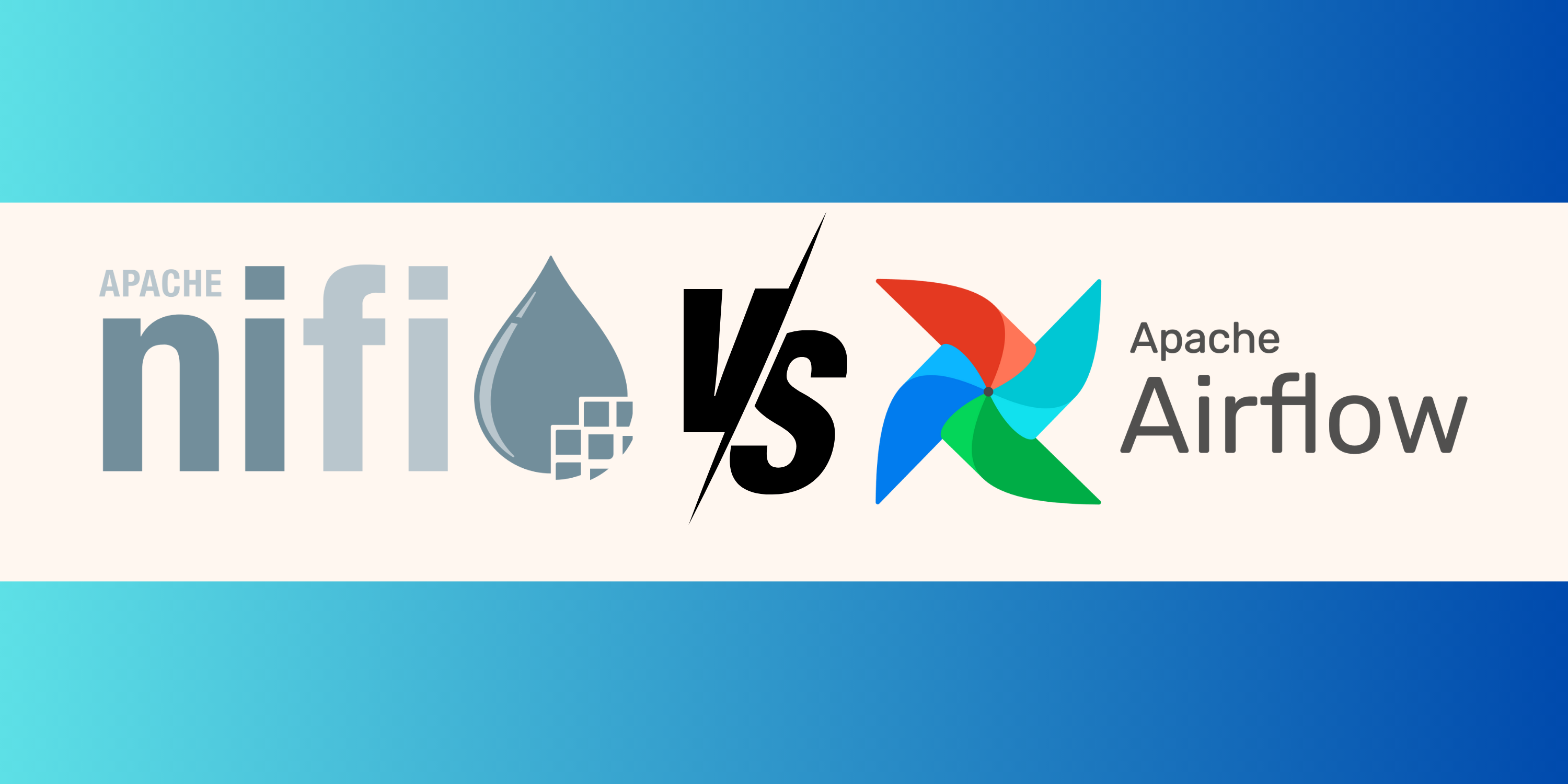Apache Airflow vs Apache NiFi: A Comprehensive Comparison


When it comes to data processing and workflow management, Apache Airflow and Apache NiFi are two popular open-source tools that are widely used across different industries. Both tools offer unique features and capabilities to manage, schedule, and monitor complex data pipelines. In this article, we will provide a comprehensive comparison of Apache Airflow and Apache NiFi, discussing their key features, similarities, differences, and use cases to help you determine which tool is best suited for your specific needs.
What is Apache Airflow?
Apache Airflow is an open-source platform developed by Airbnb in 2014 and later donated to the Apache Software Foundation. It is designed to programmatically author, schedule, and monitor workflows using Directed Acyclic Graphs (DAGs). Airflow is built using Python, and it allows users to define workflows through Python scripts, making it a highly extensible and flexible platform.
What is Apache Nifi?
Apache NiFi, initially developed by the National Security Agency (NSA) and later donated to the Apache Software Foundation, is an open-source data integration tool that focuses on data routing, transformation, and system mediation. NiFi provides a web-based interface for designing, controlling, and monitoring data flows. It is built using Java and supports a wide variety of data formats, sources, and sinks.
Similarities of Apache Airflow and Apache Nifi
- Both Apache Airflow and Apache NiFi are open-source tools under the Apache Software Foundation.
- Both tools are used for managing complex data workflows and pipelines.
- Both offer web-based interfaces for monitoring and managing workflows (Airflow’s web based interface is limited compared to NiFi’s more visual interface).
Differences of Apache Airflow and Apache Nifi
- Language: Airflow is built using Python, while NiFi is built using Java.
- Workflow Definition: Airflow uses Python scripts to define workflows as DAGs, while NiFi relies on flow-based programming with a drag-and-drop interface.
- Data Processing: Airflow focuses primarily on orchestrating data processing tasks, whereas NiFi is more focused on data movement, routing, and transformation.
- Scalability: Airflow can be scaled horizontally with distributed task execution, while NiFi can scale out using its clustering feature.
- Ease of Use: NiFi’s web-based interface is more user-friendly, especially for non-developers, compared to Airflow’s Python-based workflow definition.
Use Cases of Apache Airflow
ETL processes: Airflow is ideal for managing complex ETL workflows, with its emphasis on task dependencies and scheduling.
Machine learning pipelines: Airflow can be used to orchestrate machine learning pipelines, including data preprocessing, model training, and evaluation.
Data lake management: Airflow can be employed to manage data lake ingestion, processing, and reporting workflows.
Use Cases of Apache NiFi
Data ingestion: NiFi is well-suited for ingesting data from various sources, like IoT devices, social media, or log files, and routing it to appropriate destinations.
Data transformation: NiFi’s built-in processors can be used to transform, enrich, and filter data during transit.
Real-time data streaming: NiFi can handle real-time data streaming and processing, providing low-latency data movement and processing.
Key Features of Apache Airflow
Directed Acyclic Graphs (DAGs): Airflow uses the DAG concept to define workflows, ensuring tasks are executed in a specific order with proper dependencies.
Extensibility: Airflow supports custom plugins and operators, allowing users to extend its functionality to meet specific requirements.
Dynamic pipeline creation: Airflow enables dynamic pipeline generation using Python scripts, allowing for complex, programmatic workflows.
Rich CLI: Airflow provides a rich command-line interface (CLI) for managing and interacting with DAGs.
Scalability: Airflow can be easily scaled horizontally, using distributed task execution with Celery, Kubernetes, or other executors.
Key Features of Apache NiFi
Data Provenance: NiFi provides detailed data provenance, including data lineage and attribute history, allowing users to track data flow throughout the entire pipeline.
Web-based UI: NiFi offers an intuitive, web-based user interface for designing, managing, and monitoring data flows.
Flow-based programming: NiFi uses flow-based programming to enable users to simply drag and drop components onto the canvas and connect them to create data flows.
Data buffering: NiFi’s data buffering capabilities ensure that data is not lost during processing, even in cases of system failure.
Security: NiFi provides built-in security features, including SSL/TLS, authentication, and authorization, to protect sensitive data.
Conclusion
Apache Airflow and Apache NiFi are powerful tools with different strengths and use cases. Airflow is a better fit for scenarios where task dependencies, scheduling, and complex workflows are essential, while NiFi excels in data ingestion, transformation, and real-time data streaming. When choosing between the two, it’s crucial to consider your specific requirements, the complexity of your workflows, and the skills of your team. Ultimately, the right tool depends on your unique situation and the goals you want to achieve with your data pipelines.
